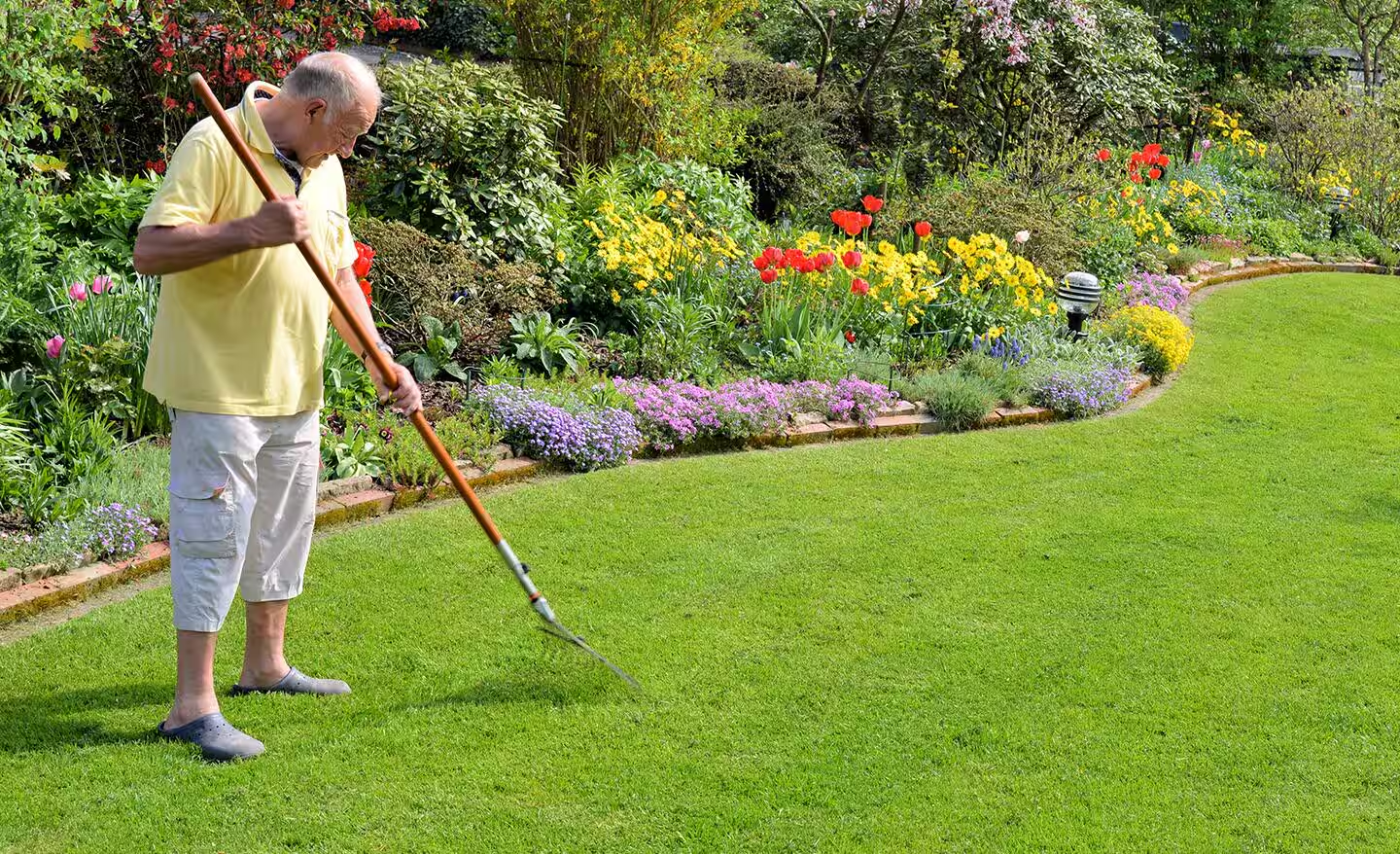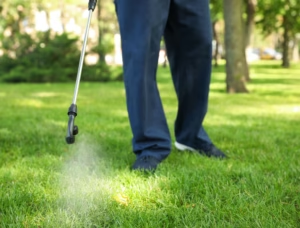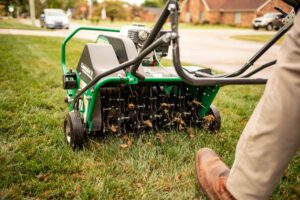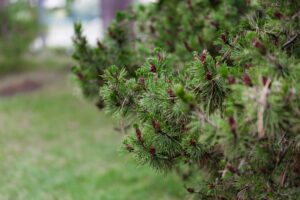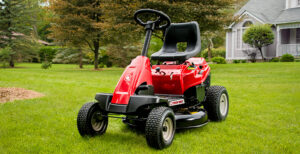Transform Your Yard: Essential Spring Lawn Care Steps for a Lush Summer
Spring marks the awakening of your lawn from its winter dormancy, making it the perfect time to establish a foundation for lush, healthy grass throughout the growing season. A strategic approach to spring lawn care not only enhances your yard’s appearance but also builds resilience against summer stresses like heat, drought, and pest pressure. This comprehensive guide will walk you through essential spring lawn maintenance tasks, timing considerations, and professional techniques to revitalize your turf and set the stage for a thriving landscape.
Why Spring Lawn Care Matters
The care you provide your lawn during spring directly impacts its performance for the remainder of the year. As soil temperatures rise and grass emerges from dormancy, your lawn enters a critical growth phase where it establishes root depth, density, and overall vigor.
Early spring interventions address winter damage, control emerging weeds before they establish, and provide essential nutrients during the lawn’s peak growth period. A well-executed spring lawn care routine significantly reduces common summer problems including brown patches, weed infestations, and irrigation inefficiency.
Timing Your Spring Lawn Maintenance
Proper timing is crucial for spring lawn care success. The optimal window for most maintenance activities begins when:
- Soil temperatures consistently reach 55°F (13°C) at a 2-inch depth
- The lawn has greened up by approximately 50%
- Nighttime temperatures remain above freezing
- Excess spring moisture has drained sufficiently to avoid soil compaction
For cool-season grasses (Kentucky bluegrass, fescue, ryegrass), this typically means early to mid-spring. For warm-season grasses (Bermuda, zoysia, St. Augustine), late spring is generally more appropriate as these varieties require warmer soil temperatures to begin active growth.
Essential Spring Lawn Care Steps
1. Clean and Clear Winter Debris
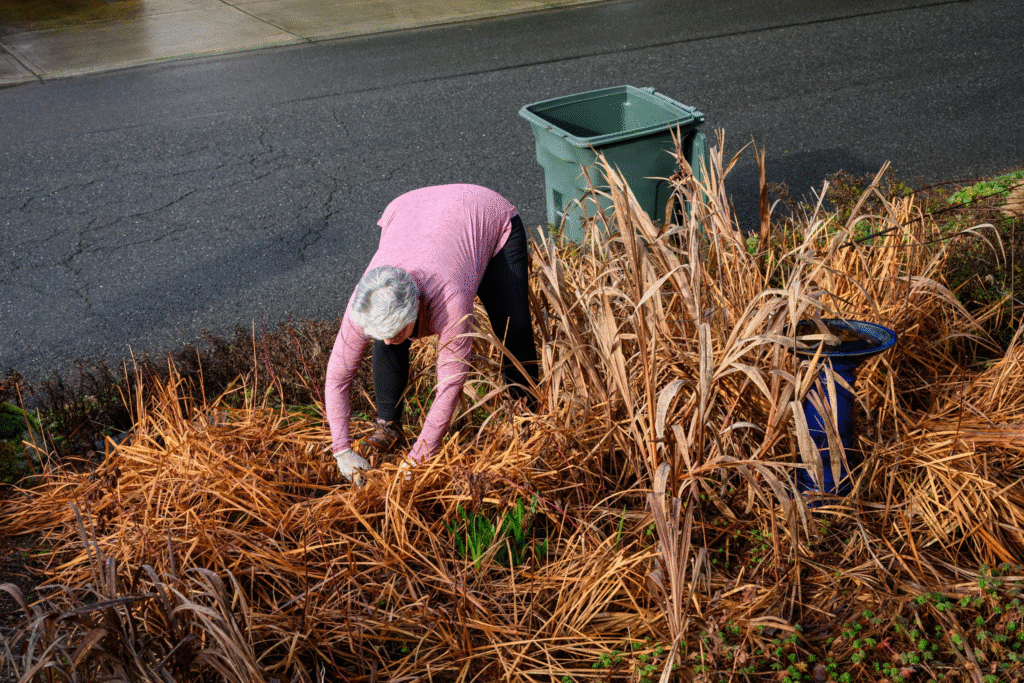
Why it matters: Winter debris can smother grass, harbor diseases, and prevent sunlight from reaching emerging shoots.
How to do it right:
- Remove fallen branches, leaves, and accumulated debris using a lightweight rake
- Pay special attention to matted areas where snow mold may have developed
- Clean out thatch buildup exceeding ½ inch in depth
- Avoid aggressive raking on wet soil to prevent uprooting tender grass shoots
For heavily matted areas, use a leaf blower on a low setting rather than aggressive raking, which can damage new growth. If you notice gray or pink patches (indicators of snow mold), gentle raking improves air circulation to affected areas and speeds recovery.
2. Assess Lawn Damage and Plan Repairs
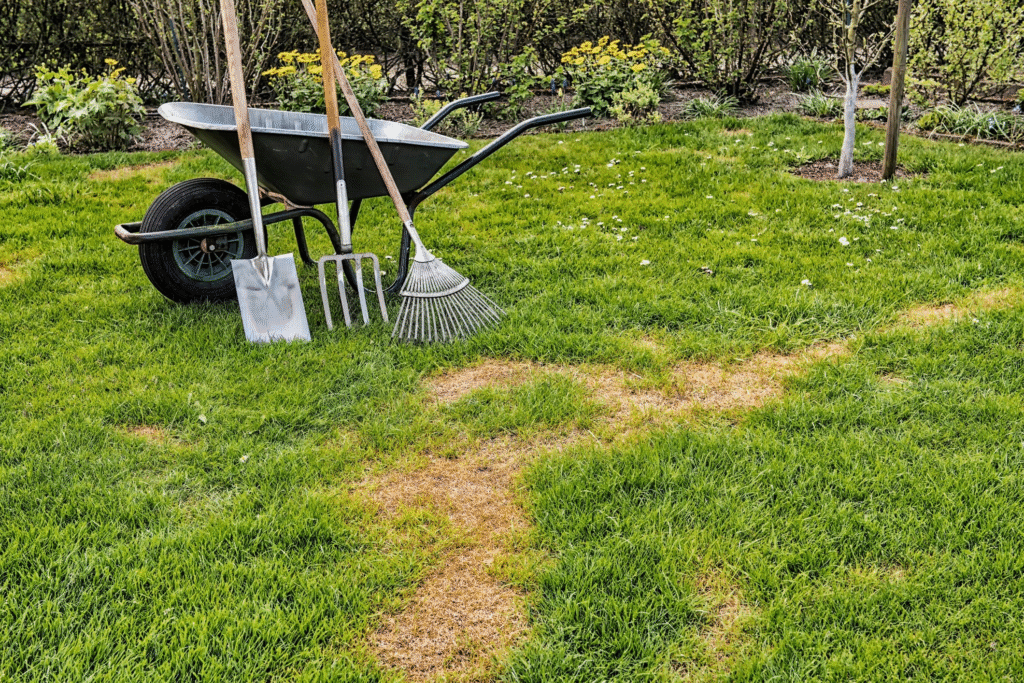
Why it matters: Identifying winter damage early allows for targeted repairs before summer stresses compound existing problems.
How to do it right:
- Conduct a thorough inspection for:
- Salt damage near walkways and roads
- Snow plow injury along driveway edges
- Vole or mole tunneling
- Animal urine spots (particularly from dogs)
- Areas of poor drainage showing prolonged saturation
- Mark damaged areas with small flags for focused repair efforts
- Document problem areas with photos for before/after comparisons
For salt-damaged areas, apply gypsum at a rate of 40 pounds per 1,000 square feet to help displace sodium from soil particles. Areas showing significant damage may require spot reseeding or sodding once soil temperatures consistently reach 60°F (16°C).
3. Test and Amend Soil pH and Nutrients

Why it matters: Soil testing provides a scientific basis for fertilization decisions and identifies imbalances that prevent optimal grass performance.
How to do it right:
- Collect soil samples from multiple locations across your lawn at 3-4 inch depth
- Submit samples to your county extension office or a reputable soil testing laboratory
- Request analysis of:
- Soil pH (most lawn grasses prefer 6.0-7.0)
- Macronutrients (N-P-K)
- Organic matter content
- Micronutrient levels
- Adjust pH according to test results:
- Add lime to raise pH in acidic soils
- Apply sulfur to lower pH in alkaline conditions
- Follow application rates specified in test recommendations
Soil testing should ideally be performed every 2-3 years, but annual testing can be beneficial when actively correcting significant imbalances. Apply amendments when soil is moist but not saturated for maximum effectiveness.
4. Address Compaction Through Core Aeration
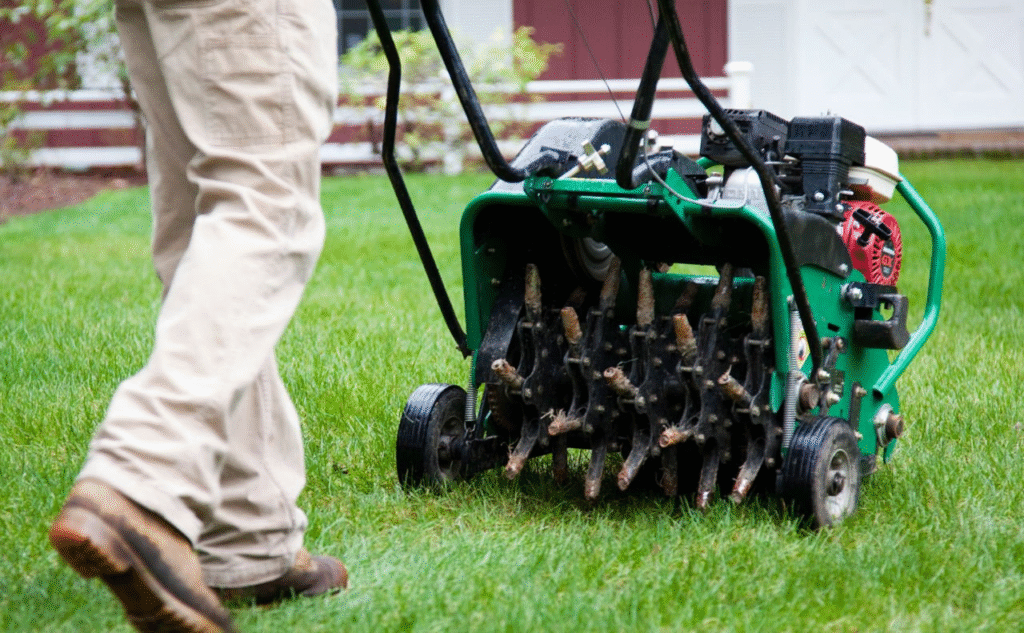
Why it matters: Compacted soil restricts root growth, impedes water penetration, and reduces nutrient availability.
How to do it right:
- Schedule aeration when:
- Soil is moist but not saturated
- Grass is actively growing but not under heat stress
- Before applying pre-emergent herbicides (if used together)
- Use a mechanical core aerator that removes soil plugs rather than simply puncturing the soil
- Make multiple passes in different directions for thorough coverage
- Allow soil cores to decompose naturally on the lawn surface
- Water thoroughly after aeration to prevent root desiccation
For home lawns, spring aeration is particularly beneficial when:
- The lawn receives heavy foot traffic
- The soil has high clay content
- Thatch exceeds ½ inch in depth
- The lawn shows signs of poor water infiltration
5. Apply the Best Lawn Treatment for Spring: Strategic Fertilization

Why it matters: Spring fertilization fuels the lawn’s natural growth cycle, improving density, color, and resistance to stresses.
How to do it right:
- Select a fertilizer formulated specifically for spring application:
- For cool-season grasses: Choose a balanced ratio like 20-5-10 with moderate nitrogen
- For warm-season grasses: Select a higher nitrogen formulation like 24-2-12 as they enter active growth
- Apply when grass is dry but soil is lightly moist
- Use a calibrated spreader to ensure even distribution
- Follow application rates based on:
- Grass type
- Soil test results
- Fertilizer analysis
- Water thoroughly after application to activate fertilizer and prevent burn
Professional tip: Consider using a slow-release nitrogen fertilizer in spring to provide sustained feeding without excessive top growth, which can weaken the lawn before summer heat arrives. Products containing sulfur-coated urea or polymer-coated nitrogen offer extended feeding for 8-12 weeks.
6. Implement Strategic Weed Control

Why it matters: Spring is the critical window for preventing both cool-season winter annuals and warm-season summer weeds.
How to do it right:
- For crabgrass and summer annual prevention:
- Apply pre-emergent herbicide when soil temperatures reach 55-58°F (13-14°C)
- Timing typically coincides with forsythia blooming in your region
- Ensure even coverage, particularly along sidewalks, driveways, and areas that heat up quickly
- For broadleaf weed control:
- Target actively growing weeds like dandelions, clover, and plantain
- Apply when temperatures are between 60-80°F (16-27°C)
- Treat when no rain is forecast for 24 hours
- Avoid application during drought stress or when temperatures exceed 85°F (29°C)
Common mistake to avoid: Applying pre-emergent herbicide after crabgrass has germinated renders the treatment ineffective. Use soil temperature maps from your local extension office to determine optimal timing for your region.
7. Calibrate Irrigation Systems

Why it matters: Proper spring irrigation setup prevents both drought stress and water-related lawn diseases.
How to do it right:
- Inspect irrigation system components:
- Check for winter damage to heads, pipes, and controllers
- Clean filters and unclog spray nozzles
- Replace damaged components before the watering season begins
- Conduct a distribution uniformity test:
- Place catch cups across the lawn
- Run each zone for a set time (15 minutes)
- Measure water distribution and adjust heads as needed
- Program irrigation schedule based on:
- Grass type (cool-season vs. warm-season)
- Soil type (clay, loam, or sandy)
- Sun exposure and microclimate variations
- Current weather conditions
Professional insight: Program irrigation for early morning (4-7am) when wind is minimal and evaporation rates are low. Adjust watering frequency rather than duration—deep, infrequent watering promotes deeper root development and drought tolerance.
8. Set Proper Mowing Height and Practices

Why it matters: Correct spring mowing establishes optimal grass density and prepares the lawn for summer stress.
How to do it right:
- Sharpen mower blades before the first cut
- Adjust mowing height based on grass type:
- Kentucky bluegrass and perennial ryegrass: 2.5-3.5 inches
- Tall fescue: 3-4 inches
- Bermudagrass: 1-2 inches (once actively growing)
- Zoysiagrass: 1-2 inches (once actively growing)
- Follow the one-third rule: never remove more than ⅓ of grass height in one mowing
- Gradually lower cutting height to recommended summer levels
- Consider grasscycling (leaving clippings on the lawn) to return nutrients to the soil
Seasonal adjustment strategy: For cool-season grasses, maintain slightly higher mowing heights in late spring to prepare for summer heat. For warm-season grasses, gradually lower the cutting height as growth accelerates with warmer temperatures.
Getting Your Lawn Ready for Spring: Regional Considerations
Cool-Humid Regions (Northeast, Upper Midwest)
- Prioritize snow mold remediation and salt damage repair
- Apply crabgrass pre-emergent slightly later (mid-spring)
- Monitor for heavy spring rainfall that can leach early fertilizer applications
- Address acidic soil conditions common in these regions with lime applications based on soil tests
Transition Zone (Mid-Atlantic, Lower Midwest)
- Consider dormant seeding for cool-season grasses in very early spring
- Prepare for aggressive weed pressure as both cool and warm-season weeds thrive
- Implement preventive fungicide programs if brown patch or dollar spot have been historical problems
- Monitor soil temperatures carefully for precise pre-emergent timing
Warm-Season Regions (Southeast, Southwest)
- Delay major maintenance until warm-season grasses show 50% green-up
- Apply pre-emergent herbicides earlier (late winter to early spring)
- Prepare for extended fertilization programs that continue through summer
- Consider preventive white grub control in early spring if problematic in previous years
Lawn Maintenance Tips for Spring Success
Creating a Spring Lawn Care Calendar
Develop a customized spring lawn care calendar based on your grass type, local climate, and specific lawn conditions. A well-organized approach ensures timely implementation of critical tasks:
Early Spring (Soil temperatures 45-55°F)
- Clean up winter debris
- Conduct soil testing
- Apply lime or sulfur amendments if needed
- Begin mowing when grass reaches 3 inches (cool-season) or shows green-up (warm-season)
Mid-Spring (Soil temperatures 55-65°F)
- Apply pre-emergent herbicide
- Perform core aeration
- Apply initial fertilization
- Spot-treat emerging broadleaf weeds
- Begin regular mowing schedule
Late Spring (Soil temperatures above 65°F)
- Apply slow-release fertilizer if not done earlier
- Increase irrigation as temperatures rise
- Monitor for insect activity (billbugs, sod webworms)
- Adjust mowing height upward for summer preparation
Technology Tools for Spring Lawn Care
Leverage technology to optimize your spring lawn care routine:
- Soil temperature sensors to precisely time pre-emergent applications
- Smart irrigation controllers that adjust based on weather conditions
- Lawn care apps that provide local recommendations and timing alerts
- Subscription soil testing services that track nutrient trends over time
- Rainfall monitors to prevent overwatering during spring rain events
Common Spring Lawn Care Mistakes to Avoid
Timing Errors
- Applying pre-emergent herbicides too late (after weed germination)
- Scalping the lawn during the first spring mowing
- Aerating when soil is excessively wet or dry
- Fertilizing too early before active growth begins
Treatment Misjudgments
- Over-applying nitrogen fertilizer, creating excessive top growth
- Using broadleaf weed control during temperature extremes
- Applying post-emergent herbicides to drought-stressed turf
- Overseeding cool-season grasses too late in spring (high failure rate)
Irrigation Issues
- Beginning regular irrigation before necessary
- Watering too frequently and too lightly
- Failing to adjust irrigation controllers seasonally
- Relying on automatic timers without accounting for natural rainfall
Sustainable Spring Lawn Care Approaches
Incorporate these environmentally responsible practices into your spring lawn care routine:
- Use organic fertilizers or synthetic-organic blends for slower, more sustainable nutrient release
- Consider corn gluten meal as a natural pre-emergent alternative
- Maintain higher mowing heights to shade soil, reduce weed germination, and conserve water
- Incorporate drought-resistant grass varieties when repairing damaged areas
- Create buffer zones near water features to prevent fertilizer and herbicide runoff
- Retain grass clippings on the lawn to reduce fertilizer requirements (can supply up to 25% of nitrogen needs)
- Invest in electric or battery-powered lawn equipment to reduce emissions
Conclusion: The Payoff of Proper Spring Lawn Care
Investing time in proper spring lawn care yields dividends throughout the growing season. By systematically addressing the foundation of lawn health—soil quality, appropriate feeding, weed prevention, and proper cultural practices—you create a resilient turf system capable of withstanding summer stresses.
The best spring lawn treatment isn’t a single product or technique but rather a comprehensive approach that addresses your lawn’s specific needs based on grass type, regional climate, and existing conditions. By following these scientifically-based recommendations and timing interventions properly, you’ll establish the framework for a lawn that remains lush, green, and low-maintenance throughout the growing season.
Remember that consistency is key to successful lawn care. Document your spring lawn care activities, note areas that respond particularly well or poorly to treatments, and use this information to refine your approach in subsequent years. With each season, you’ll develop a more customized program that produces exceptional results for your unique landscape.
